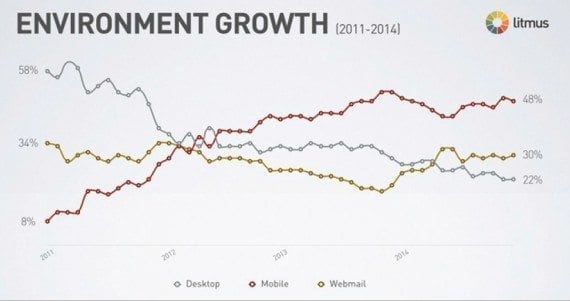In “Email Marketing Metrics, Part 1: The Basics,” my article last month, I addressed the primary measurements for email marketing: delivery rate, open rate, and click rate.
In this “Part 2” installment, I’ll review more advanced email metrics, with tips on how to use them.
Conversion Rates
Tracking from an email open to a click to a conversion can be difficult because consumers typically don’t follow a straight path from an email to an instant purchase. You first need to ensure that the email has the proper tracking parameters appended to all links to your website. Depending on the tracking system, you can typically determine reporting, and sales attribution rules.
Since consumers take vastly different paths, how you set up your tracking will determine if email gets attributed to a sale. For example, assume a consumer receives an email from you and clicks on it, and then shops but, ultimately, leaves your site. A day later the consumer searches on Google for your website, clicks on a search ad, and then makes the purchase. Does the email or the ad get the credit for the sale?
Tracking conversions from your email program, in other words, is a good way to gage success. But it is only one variable to tell the complete story.
Offer Code Redemption
The use of offer or promotion codes in emails is an effective way to measure effectiveness. However, like other methods of tracking, it isn’t perfect.
- Is the code unique to the email campaign?
- Did the email promotion code leak onto any affiliate sites or coupon sites where it may be used?
- Is the promotional code automatically applied after clicking through the email, or does the recipient have to go back and type it in from the email?
All of these factors will determine whether individuals will use an offer code. In my previous ecommerce experience, we found that roughly 33 percent of sales from a direct click in an email promotion used the offer code. We also found that roughly 50 percent of the promotional code sales were coming in under a different media — people called in the order or came to the site directly and used the email promotion code.
Know the behavior of your visitors and set benchmarks to determine the success of future promotional code offers.
Domain Metrics
Reviewing metrics by domain is an important step in locating problems with particular ISPs. Email delivery is complicated and changes daily. So monitoring your performance across the different domains — i.e., Yahoo, Gmail, Hotmail, many more — in your database can help to spot delivery problems.
For example, if your email open rates drop suddenly with all Hotmail subscribers, there could be an issue delivering mail to that domain. Notify your account manager at your email service provider to investigate and resolve the issue.
Subscriber Value
Every email subscriber is worthwhile to the bottom line of your business. Knowing what each subscriber is worth will help you to maintain and grow your subscriber list. This metric is fairly easy to estimate. Simply take the yearly revenue you’ve attributed to email marketing, and divide by the number of deliverable email subscribers. For example, if your email programs earn $100,000 a year, and you have 20,000 subscribers, then each subscriber has an estimated worth of $5 a year, or $25 for 5 years.
Those will always be rough estimates. But setting a value per subscriber will help ensure that you are keeping subscribers engaged and otherwise building your list to account for lost subscribers. In addition, assigning a value per subscriber will help calculate return on investment for future subscriber acquisition campaigns.
Mobile Metrics
It’s likely a large percentage of your subscribers are reading and responding to your emails on their smartphones. This greatly impacts basic activity like opens, clicks, and conversions. Ensure that you are able to measure these basic metrics on mobile versus desktops. Most email service providers offer reporting that breaks down metrics by device or operating system. Litmus, an email testing and tracking platform, also offers this service.

This chart from Litmus shows email open rates by device — from 2011 to 2014. According to Litmus, 48 percent of all opens in 2014 occurred on mobile devices.
Creating benchmarks for these metrics is the best place to start. What percentage of your subscribers is opening on mobile devices versus desktops? How is that trend changing over time?
In addition, the day and time could determine the device that someone uses. Recipients could use their desktop computers during working hours and mobile devices at night and on weekends. Establishing these metrics will help to direct your strategy to what you want to accomplish.
In addition, look at overall trends in the industry. For example, click rates tend to be much lower for individuals opening an email on their smartphones versus a desktop. Understanding that behavior will help address concerns for lower click rates.
In short, tracking the performance of your email program is all about benchmarking your metrics, and monitoring performance as you test and alter your strategy. Understanding basic and advanced email metrics and knowing which of those to focus on will determine your email marketing success.




